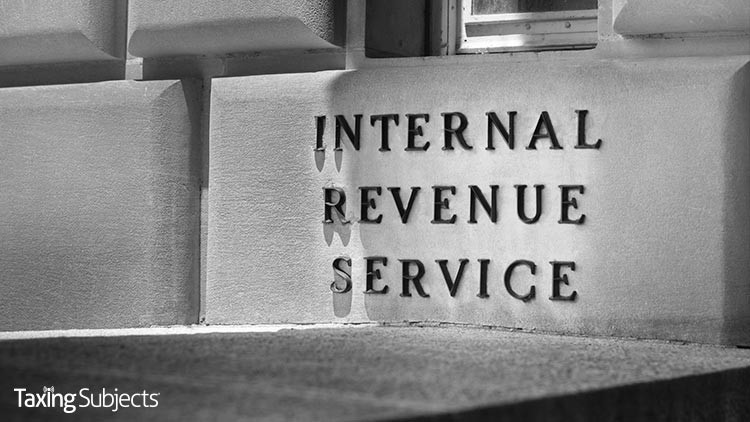by Ameritax | Jul 3, 2021 | Tax Tips and News
Monthly Advance Child Tax Credit payments are set to begin in two weeks. While it’s too late to change the bank account that will receive the July 15 payment, qualifying taxpayers can now use a tool on IRS.gov to update their information before the August payment is issued.
The Internal Revenue Service announced a new feature for the Child Tax Credit Update Portal this week that will let users change the routing number used to receive direct deposits of the monthly advance payments. Those who want to update their account in time for next month’s payments need to do so by August 2—otherwise, the agency will send money using the method currently on file on August 13.
Check eligibility and more with the Child Tax Credit Update Portal.
Prior to the most recent feature update, the Child Tax Credit Update Portal still served as an important payment management tool for taxpayers—like helping families determine eligibility for the credit and choosing their payment method.
“First, families should use the Child Tax Credit Update Portal to confirm their eligibility for the payments,” the IRS says. “If eligible, the tool will also indicate whether they are enrolled to receive their payments by direct deposit.” The displayed information is where the July 15 payment will be direct deposited, “and if they don’t change the account, all future payments will go there as well.”
The IRS says that everyone should choose direct deposit for these monthly payments, citing speed, security, and convenience. Luckily, opting into direct deposit only requires entering three pieces of information:
- Routing number
- Account number
- Account type
When it comes to the type of account, users need to “[indicate] whether it is a savings or checking account.”
What if someone doesn’t want to get monthly advance payments of the Child Tax Credit?
The IRS notes that some taxpayers may not want to receive the Advance Child Tax Credit payments. Some might not want to deal with reconciling the payments next year (Topic H under the Child Tax Credit FAQ), while others may have one of the following reasons:
- Their income in 2021 is too high to qualify them for the credit.
- Someone else (an ex-spouse or another family member, for example) qualifies to claim their child or children as dependents in 2021
- Their main home was outside of the United States for more than half of 2021
Regardless, the IRS says the Child Tax Credit Update Portal will even let taxpayers opt out of the monthly payments: Simply choose the “unenroll feature.”
To learn more about the Child Tax Credit Update Portal and the Advance Child Tax Credit payments, visit IRS.gov.
Source: IR-2021-143
– Story provided by TaxingSubjects.com
by Ameritax | Jul 3, 2021 | Tax Tips and News
New guidance from the Internal Revenue Service and the Treasury Department is aimed at keeping the lights on at renewable energy projects delayed by the COVID-19 pandemic.
Previous IRS notices gave eligible renewable energy projects a Continuity Safe Harbor, giving the green light to claim the production tax credit and the investment tax credit, as long as the overall project goes on line within a certain period of time.
Under this scenario, the clock starts ticking in the taxable year that construction started.
Unfortunately, there’s a problem.
Even with the recent inroads made against COVID-19, the pandemic has continued to impact construction of renewable energy projects, pushing them farther behind schedule, putting them at risk of missing the Continuity Safe Harbor deadline altogether.
This new guidance delivers relief to renewable energy projects that have been hit by pandemic-driven project delays, allowing them more time to comply with the Continuity Safe Harbor. It also introduces more flexibility for these projects to choose which way to best fulfill the continuity requirement outside of the safe harbor.
How does the safe harbor work?
The changes are laid out in Notice 2021-41. This new guidance gives qualified renewable energy projects a choice of two ways to show the taxpayer’s started construction on the project: the Physical Work Test, or the Five Percent Safe Harbor.
Once construction begins, the project has to make continuous progress toward completion in order satisfy requirements.
If the Physical Work test is used, the project falls under the Continuous Construction Test to show that the project has made continuous progress. With the Five Percent Safe Harbor method, the project is measured under the Continuous Efforts Test.
Notice 2021-41 extends the Continuity Safe Harbor period beyond that announced previously and covers renewable projects that started in 2016 through 2020:
- For projects for which construction began under the Physical Work Test or the Five Percent Safe Harbor in 2016, 2017, 2018, or 2019, the Continuity Safe Harbor is satisfied if the project is placed in service by the end of a calendar year that is no more than 6 calendar years after the calendar year during which construction began; and
- For projects for which construction began under the Physical Work Test or the Five Percent Safe Harbor in calendar year 2020, the Continuity Safe Harbor is satisfied if the project is placed in service by the end of the calendar year that is no more than 5 calendar years after the calendar year during which construction began.
In addition, the notice also gives qualifying projects a kind of escape hatch.
If the Continuity Safe Harbor doesn’t apply to their project, taxpayers can still satisfy the continuity requirement if they can satisfy either the Continuous Construction or the Continuous Efforts Tests.
This provision can be used regardless of the method the taxpayer used when construction commenced.
For more information about tax relief for businesses impacted by the COVD-19 pandemic, see Coronavirus Tax Relief for Businesses and Tax-Exempt Entities.
Source: Treasury, IRS extend safe harbor for renewable energy projects.
– Story provided by TaxingSubjects.com
by Ameritax | Jun 30, 2021 | Tax Tips and News
Taxpayers who aren’t required to file a federal income tax return don’t need to file to get advance payments of the Child Tax Credit. They will, however, have to register with the IRS if they haven’t filed a return lately.
Registering through the IRS Non-Filer Sign-up Tool is an easy way for these taxpayers to provide the information the IRS needs to calculate and send out the advance CTC payments. The information, such as name, address and Social Security numbers, provides the IRS with the basic data to get the monthly credit payments set up.
The targeted taxpayers and families have little or no income, and include the homeless. Generally, they just don’t have enough income to file a return. And that’s where the IRS’ tool comes in.
The Non-Filer Sign-up Tool is for people who didn’t file a tax return for either 2019 or 2020 and have not used the tool previously to claim Economic Impact Payments (EIPs). The free tool provides individuals with a way to relay to the IRS the required information on themselves, their children and other dependents as well as their direct deposit information so the advance credit payments can go straight into their bank account.
Eligible families who already filed a 2019 or 2020 return—or expect to file one—should not use the Non-Filer Sign-up Tool. Once their return is processed, the IRS will automatically check their eligibility and calculate the credit. The advance payments will then be issued.
Those who want to claim other tax benefits, such as the earned income tax credit, also should not use the Non-Filer Sign-up Tool. They should instead simply file a regular tax return.
The Advance Child Tax Credit
The American Rescue Plan Act, which became law in March of this year, made the CTC possible in its present form. The legislation expanded the credit and made it payable in advance installments.
The Child Tax Credit is normally calculated using the taxpayer’s 2020 return. If the 2020 tax return hasn’t been filed or is still being processed, the 2019 return is used to calculate the initial payment. In lieu of a 2019 return, the information that available in 2020 and entered with the Non-Filer Tool can be used.
Advance payments will be up to $300 per month per child under age 6, and up to $250 per month per child aged 6 – 17.
If banking information has been provided by the taxpayer, the IRS will send the advance payments by direct deposit. Otherwise, the advance payments will be via paper check in the mail. Payment dates are: July 15, August 13, September 15, October 15, November 15, and December 15.
For more information and other helpful resources, see Advance Child Tax Credit Payments in 2012 on IRS.gov, and FAQs on the 2021 Child Tax Credit and Advance Child Tax Credit Payments.
Source: People who don’t have to file taxes may need to register for monthly advance child tax credit payments.
– Story provided by TaxingSubjects.com
by Ameritax | Jun 27, 2021 | Tax Tips and News
The latest publication from the Internal Revenue Service is getting all the sendup worthy of a new best-seller. The Data Book for 2020 recounts the agency’s effort to deal with tax season during the time of the coronavirus.
Admittedly, the numbers supply a heroic read.
The Data Book spans the 2020 fiscal year, running from Oct. 1, 2019 to Sept. 30, 2020. Among other things, the Data Book recounts how the IRS responded to the COVID-19 pandemic, by developing new technology and equipment that allowed agency employees—thousands of employees—to work from home. This, in turn, allowed the IRS to continue processing tax returns and provide telephone assistance to taxpayers.
IRS Commissioner Chuck Rettig is understandably proud of his agency and its people for their hard work and teamwork during the pandemic.
“This year’s Data Book describes the important work that IRS employees accomplish on behalf of the public,” said Rettig. “The IRS accounts for approximately 96% of the funding that supports the federal government’s operations, while proudly serving and interacting with more Americans than any other public or private organization.”
“The 2020 Data Book also details the extraordinary measures the IRS took to protect the health and safety of taxpayers and IRS employees during the COVID-19 pandemic while implementing critical economic relief legislation—the largest economic rescue packages in US history,” Rettig added.
The 2020 Data Book also describes how the IRS eased the burden on taxpayers during the pandemic by extending the federal tax deadline to file and to pay from April 15 to July 15, 2020.
If all this sounds like it’s not enough to keep an entire federal agency busy, the IRS also debuted its People First Initiative during this time. The new program eased payment guidelines, delayed compliance actions, and suspended most collection enforcement actions, such as liens and levies, from April 15 to July 15, 2020.
The IRS giveth
To help combat the huge downturn to the economy the pandemic left in its wake, Congress passed the Coronavirus Aid, Relief and Economic Security (CARES) Act. This new law sent nearly 162 million Economic Impact Payments (EIPs) directly to American taxpayers in the first round alone. The IRS played a leading role, sending out the actual payments to taxpayers.
A second round of 146.5 million EIPs was sent out by the IRS in 2020, bringing the calendar year’s direct-payment relief total to nearly $413 billion (yet another round of relief payments would go out in 2021).
While processing and sending out relief payments, the IRS still had to continue to handle incoming federal income tax returns, processing over 240 million returns and collecting almost $3.5 trillion in federal taxes over the fiscal year.
The IRS Data Book for 2020 includes some 33 tables that describe all the agency’s work during the fiscal year, from the returns processed to the revenue collected, audits and collection activities, as well as budget and personnel figures.
While Commissioner Rettig encourages people to have a look at the 2020 Data Book, he stresses that the IRS story goes beyond statistics, charts and tables.
“IRS employees care, and our agency is made up of people who give back to their communities and help one another. Our employees provide significant support for those devastated by hurricanes, wildfires, and other natural disasters, and across the nation, they did amazing work in their communities to help those impacted by COVID-19,” Rettig said.
Source: IRS releases Data Book for fiscal 2020 describing agency’s activities during pandemic
– Story provided by TaxingSubjects.com
by Ameritax | Jun 25, 2021 | Tax Tips and News
The Internal Revenue Service has unveiled a pair of new tools to help families manage and monitor advance monthly payments of the Child Tax Credit, made possible by the American Rescue Plan.
The new tools join the Non-Filer Sign-up Tool that helps families who aren’t normally required to file an income tax return to file a return and register for the Child Tax Credit.
The Child Tax Credit Eligibility Assistant allows families to determine if they qualify for the advance credit just by answering some questions.
The Child Tax Credit Update Portal can verify taxpayers are eligible for the advance CTC payments. This tool can also be used to unenroll taxpayers from the advance payments if they choose, so they can get a lump sum when they file a tax return next year.
All families need to access the password-protected Portal is internet access and a computer or smartphone.
The Child Tax Credit Eligibility Assistant and the Child Tax Credit Update Portal are both available now on IRS.gov.
“IRS employees continue to work hard to help people receive this important credit,” IRS Commissioner Chuck Rettig said. “The Update Portal is a key piece among the three new tools now available on IRS.gov to help families understand, register for and monitor these payments. We will be working across the nation with partner groups to share information and help eligible people receive the advance payments.”
More features are on the way
A number of updates and upgrades are scheduled for the Child Tax Credit Update Portal by the IRS. Families will soon be able to use the portal to check the status of their payments. Later this month, the IRS expects taxpayers to be able to update bank account information for advance CTC payments. Next month, an upgrade is planned that will let taxpayers change their mailing address.
In late summer and fall, taxpayers should be able to use the Portal to update their family status and changes in income. More on these improvements can be found on the tool’s FAQs on IRS.gov.
Ahead of all the upgrades, though, the initial version of the Portal and its unenrollment feature are worthy of the spotlight.
Some families might prefer to wait until the end of the year and get the full credit amount as a tax refund from their 2021 return, instead of getting the advance payments. The Portal gives these taxpayers an easy way to opt out of the monthly CTC payments.
Unenrollment might also help those families that no longer qualify for the Child Tax Credit – or think they won’t qualify when they file a 2021 tax return.
There are three main ways this could happen:
- Their income in 2021 is too high to qualify them for the credit.
- Someone else (an ex-spouse or another family member, for example) qualifies to claim their child or children as dependents in 2021.
- Their main home was outside of the United States for more than half of 2021.
ID verification required for portal access
Users who want to access the Child Tax Credit Portal first have to verify their identity. Those without an existing IRS account will have to verify their identity with a kind of photo identification that uses ID.me, a trusted third-party vendor for the IRS. This important security check will keep taxpayers’ accounts secure and shielded from identity theft.
Users who have an existing IRS username or an ID.me account can use those credentials to sign in, without creating a new account.
Taxpayers without internet access or who otherwise can’t use the online tool to unenroll should contact the IRS using the telephone number included in their IRS outreach letter.
Check eligibility first
The first stop for taxpayers and their families should be the Child Tax Credit Eligibility Assistant. Here, families can see if they are qualified for the Child Tax Credit and its advance payments.
This simple tool uses a series of questions to determine if the taxpayer qualifies.
It should be noted that this is merely an eligibility tool, not a site to register, so no personal information is requested or used. But it is critical in determining whether the taxpayer should go on and either file a tax return or register using the Non-Filer Sign-up Tool.
For details on the provisions of the Advance Child Tax Credit, check out our Taxing Subjects blog on the CTC or visit the IRS web page Advance Child Tax Credit Payments in 2021.
The IRS page has direct links to all three tools mentioned here, a list of frequently asked questions and other resources.
Sources: IRS announces two new online tools to help families manage Child Tax Credit payments.
– Story provided by TaxingSubjects.com






 Ameritax
Ameritax